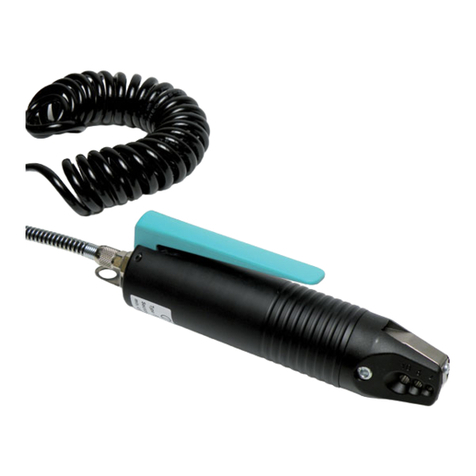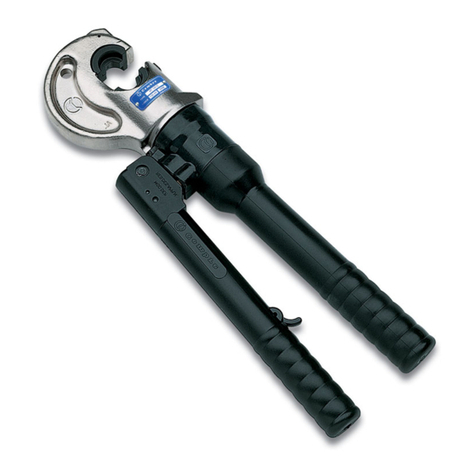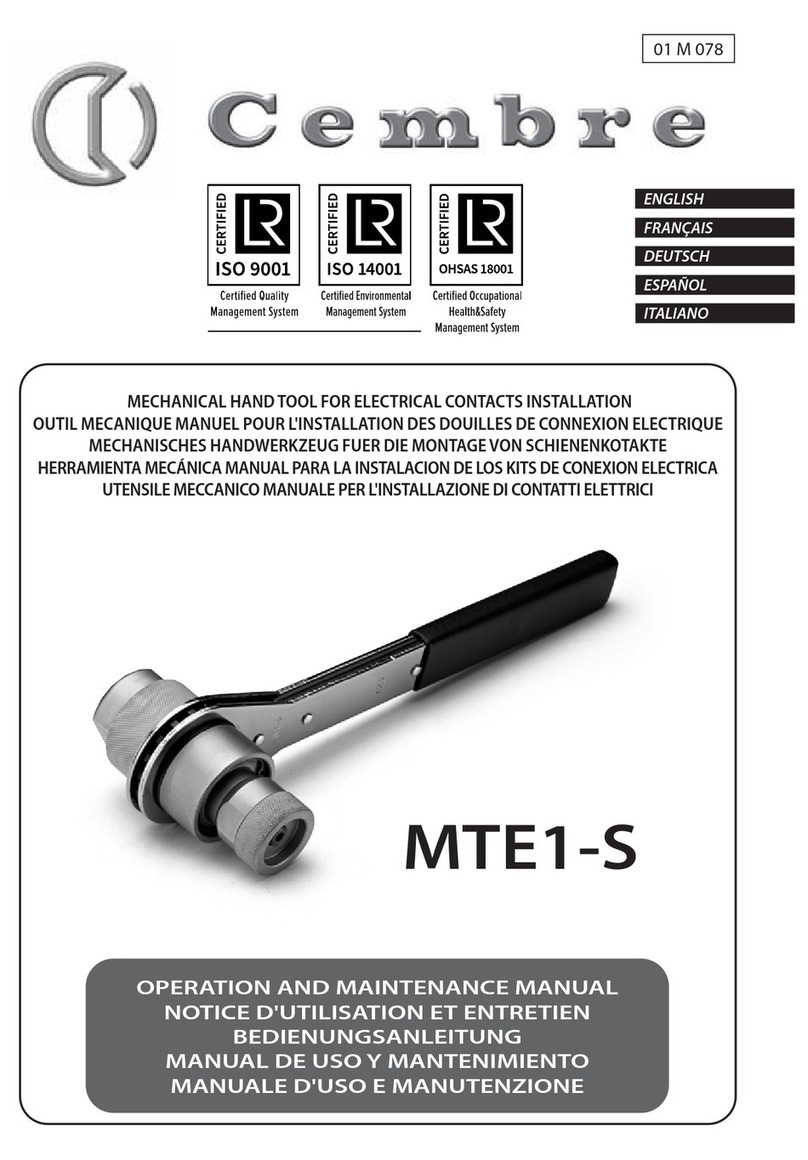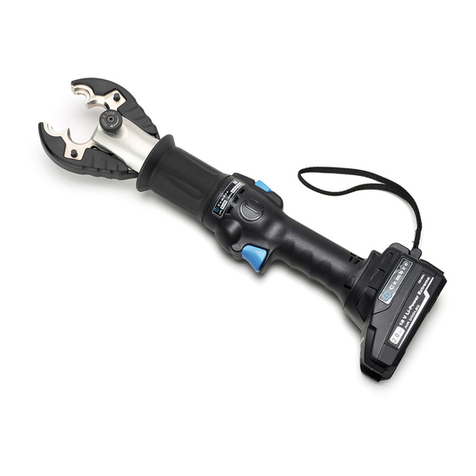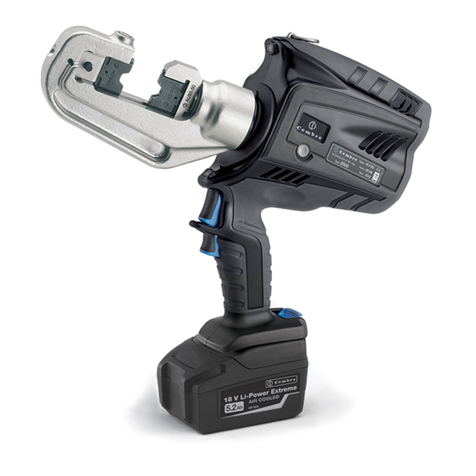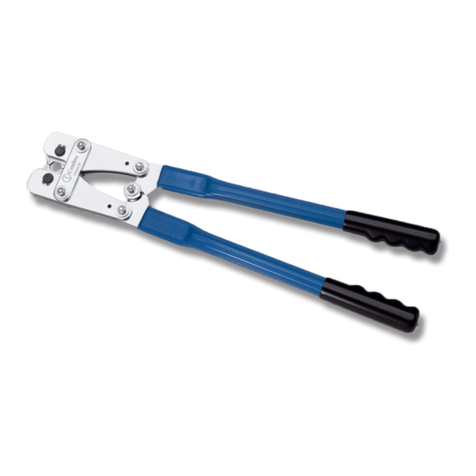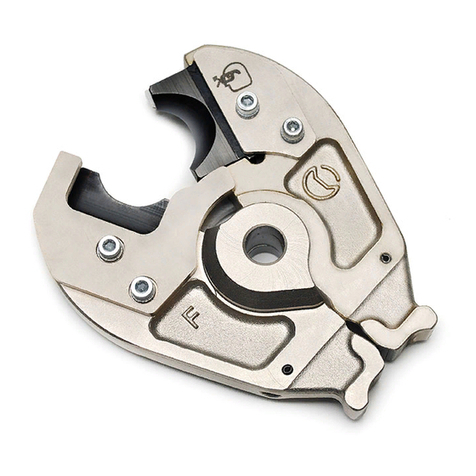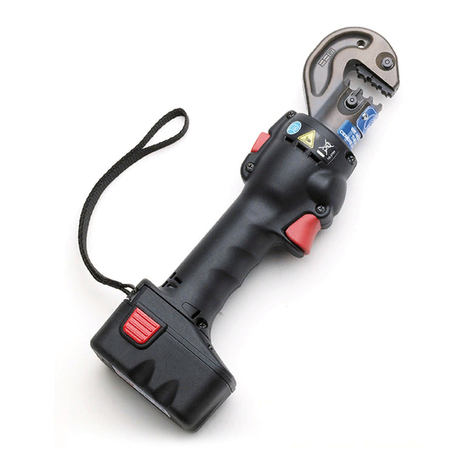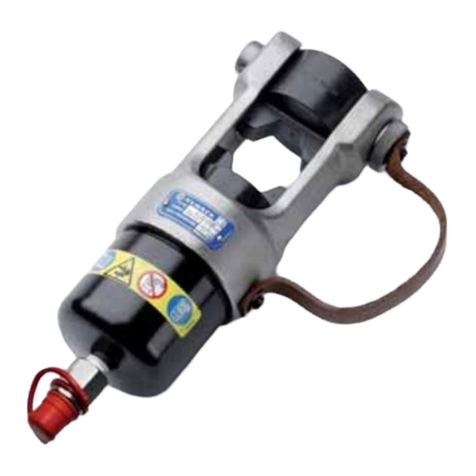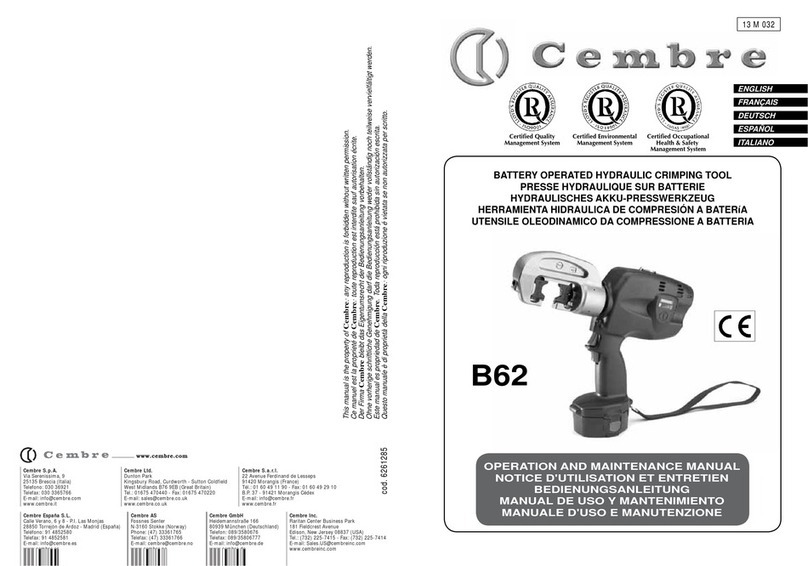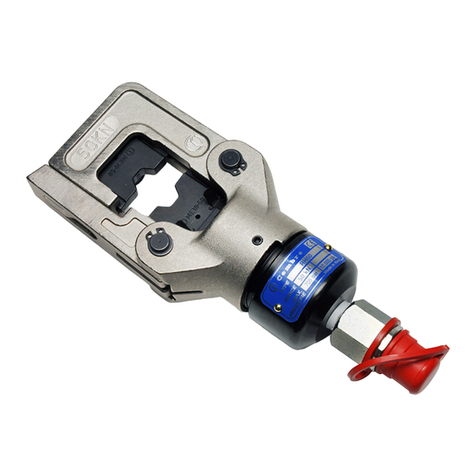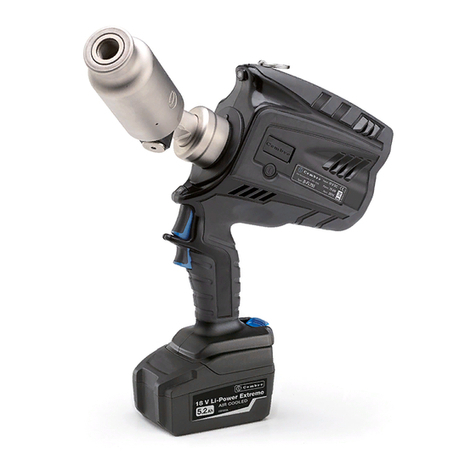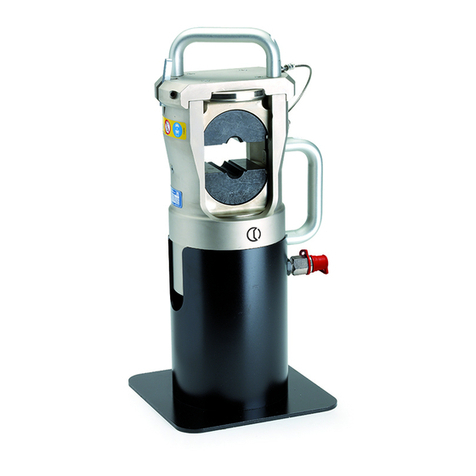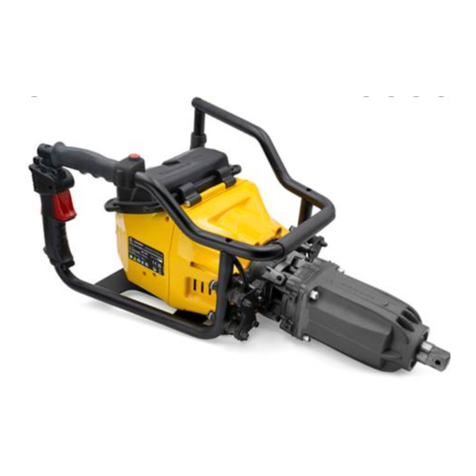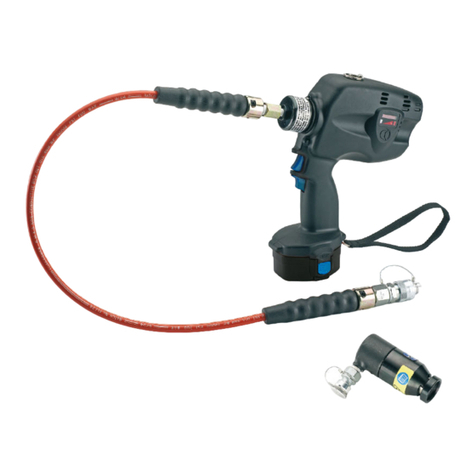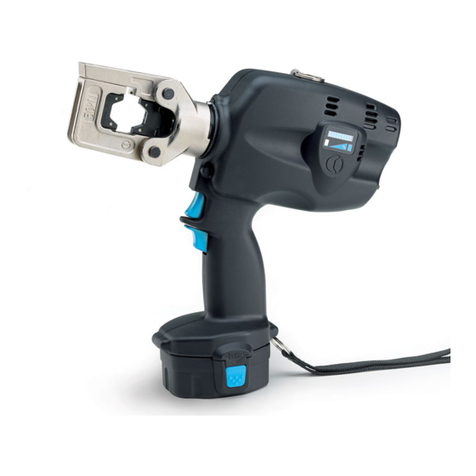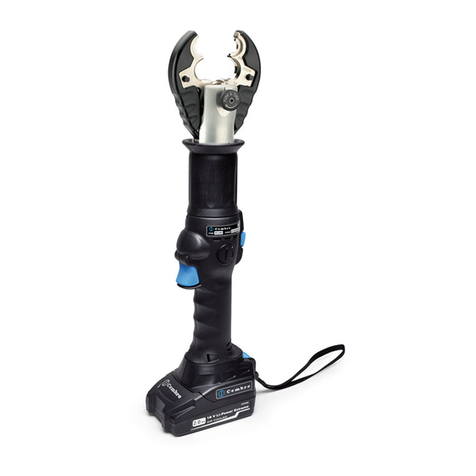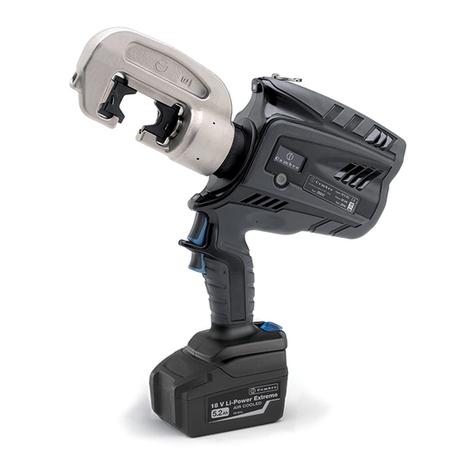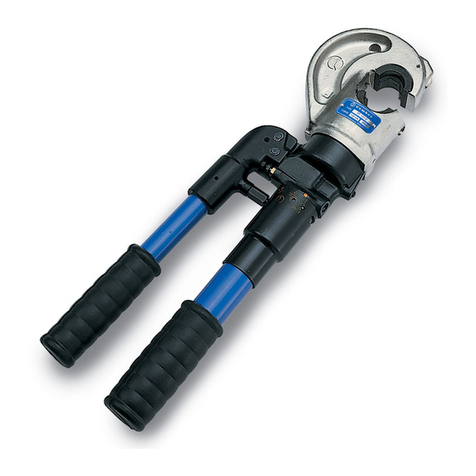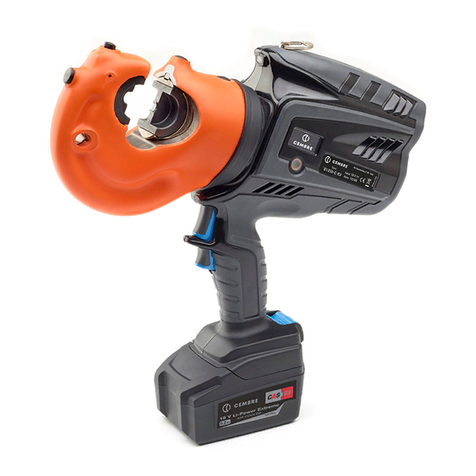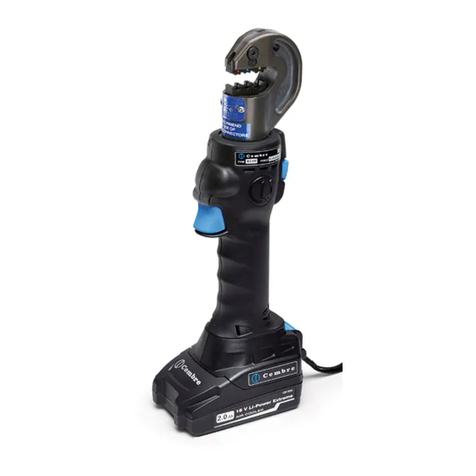
5
– Before using the tool, carefully read the instructions in this manual.
– Avant d'utiliser cet outil, lire attentivement les instructions de cette notice.
– Vor Inbetriebnahme unbedingt die Bedienungsanleitung durchlesen.
– Antes de utilizar la herramienta, leer atentamente las instrucciones en este manual.
– Prima di utilizzare l'utensile, leggere attentamente le istruzioni riportate in questo manuale.
–When operating the tool, keep hands away from the danger zone.
–Au cours de l'utilisation, tenir les mains éloignées de la zone de danger.
–Während den Arbeiten mit dem Werkzeug nicht in die Gefahrenzone fassen.
–Durante su utilización, mantenga las manos fuera de la zona de peligro.
–Durante l'utilizzo, mantenere le mani fuori dalla zona di pericolo.
– Always wear safety glasses and gloves when operating this tool.
– Porter toujours les lunettes de protection et les gants de travail.
– Das Werkzeug immer mit Schutzbrille und Handschuhe betätigen.
– Trabajar siempre con las gafas y guantes de seguridad.
– Operare sempre con occhiali di protezione e guanti da lavoro.
WARNING SYMBOLS - SYMBOLES D'AVERTISSEMENT - WARNSYMBOLE -
SÍMBOLOS DE ADVERTENCIA - SIMBOLI DI AVVERTENZA
– Never throw batteries into re or water.
– Jamais jeter les batteries dans le feu ou dans l'eau.
– Werfen Sie Akkus nicht in das Feuer oder Wasser.
– Nunca tire las baterías al fuego o al agua
– Mai gettare le batterie nel fuoco o in acqua.
– Always recycle the batteries.
– Recycler toujours les batteries.
– Verbrauchte Akkus stets dem Recycling zuführen.
– Reutilizar siempre las baterías.
– Riciclare sempre le batterie.
– Do not discard batteries into domestic refuse or waste disposal.
– Ne pas jeter de batteries dans une poubelle ou autre lieu non prévu à cet eet.
– Verbrauchte Akkus nicht der allgemeinen Abfallentsorgung zuführen.
– No tirar las baterías al cubo de basura o lugar parecido.
– Non buttate le batterie fuori uso nei cestini della spazzatura o luoghi simili.
– User information (Directives 2002/95/EC and 2002/96/EC), see page 34.
– Information pour les utilisateurs (Directives 2002/95/CE et 2002/96/CE) voir page 34.
– Information für den Benutzer (Richtlinien 2002/95/EG und 2002/96/EG) siehe Seite 34.
– Informe para los usuarios (Directivas 2002/95/CE y 2002/96/CE) vease página 34.
– Informazione agli utenti (Direttive 2002/95/CE e 2002/96/CE) vedere pagina 34.
Battery - Batterie - Akku - Batería - Batteria
Tool - Outil - Werkzeug - Herramienta - Utensile
